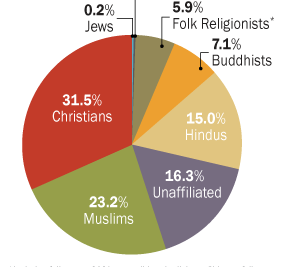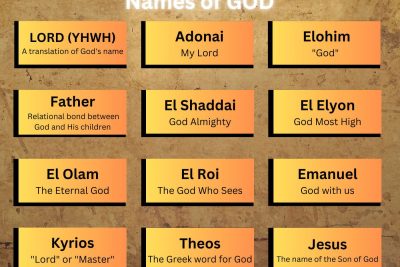
People, Flag, Religion, Language: Exploring Key Nation Facts

Ethiopia, a country steeped in ancient history and renowned for its unique cultural heritage, holds a pivotal place in the Horn of Africa. As a landlocked nation, its capital, Addis Ababa, stands as a central hub for political and economic activities. Ethiopia is celebrated as the largest and most populous nation in the Horn, tracing its roots back to the ancient Aksumite Empire, a significant historical entity that played a vital role in trade and cultural exchanges in the region.
The geographical significance of Ethiopia cannot be overstated, particularly given its rich tapestry of landscapes that range from highlands to lowland deserts. With a history that has evolved dramatically, particularly during the 19th and 20th centuries due to European colonial pressures, Ethiopia has established its distinct national identity. The country gained international prominence after its stunning victory against Italy in the 1896 Battle of Adwa, which marked a crucial turn in African independence movements. Following its liberation from Italian occupation during World War II, Ethiopia emerged as a beacon of African unity and diplomacy, becoming one of the founding members of the United Nations.
Geography and Location
Ethiopia is located in the Horn of Africa, bordered by Eritrea to the north, Djibouti and Somalia to the east, Kenya to the south, South Sudan to the west, and Sudan to the northwest. Its geographical position makes it a vital junction for trade and cultural exchange within the region. The country spans a diverse landscape, characterized by the Great Rift Valley, which slices through the nation from north to south, creating a range of elevations and climates.
The highlands cover a significant portion of the country, with the Ethiopian Plateau being a prominent feature that reaches altitudes of over 4,500 meters in some areas. This highland region contributes to Ethiopia's agricultural prosperity, enabling the cultivation of coffee, one of its most esteemed exports. In contrast, the eastern regions are marked by arid and semi-arid conditions, which pose challenges to local communities and their livelihoods. Such climatic variations significantly influence the lifestyle and culture of the Ethiopian people.
Climate
Ethiopia exhibits two main seasons: the rainy season (known as Kiremt) from June to September and the dry season (known as Bega) from October to May. The variations in climate across different regions also dictate the agricultural patterns and the economic activities available to local communities. The central highlands typically enjoy a temperate climate, conducive to diverse agricultural practices, while the lowlands experience a hotter climate, affecting the types of crops and livestock that can be sustained there.
Historical Background
Ethiopia boasts an extensive and rich history that traces back thousands of years. Known as the home of the Queen of Sheba and the site of the ancient Aksumite Empire, it is often referred to as the cradle of civilization in Africa. The Aksumite Kingdom flourished from the first to the seventh centuries AD, becoming a major trading empire that connected Africa, the Middle East, and beyond. This period was marked by the proliferation of Christianity, which remains a significant aspect of Ethiopian culture today.
Throughout its history, Ethiopia has maintained a remarkable degree of independence compared to other African nations. Notable events include the victory at the Battle of Adwa, where Ethiopian forces decisively defeated Italian colonial troops, ensuring the nation’s sovereignty. This triumph instilled a sense of national pride and unity among Ethiopians, reinforcing the idea that they could resist colonial encroachments.
The 20th Century
The 20th century witnessed profound changes within Ethiopia, marked by the reign of Emperor Haile Selassie. Under his leadership, Ethiopia modernized its political and economic structures, making significant strides toward development. However, Selassie's regime also faced challenges, including internal dissent and rival political factions. The culmination of these conflicts led to the 1974 revolution, which resulted in the overthrow of the emperor and the establishment of a Marxist-Leninist regime.
Cultural Diversity
The beauty of Ethiopia lies not only in its landscapes but also in its remarkable cultural diversity. The nation is home to over 80 distinct ethnic groups, each with its own languages, traditions, and customs. The dominant ethnic group is the Oromo, followed closely by the Amhara, Tigrayans, and Somali, among others. This diverse mosaic is a testament to the country's rich history and interactions, fostering a deep sense of cultural identity.
Each ethnic group contributes to the broader Ethiopian culture through its unique festivals, cuisine, and art forms. For instance, the annual Timkat festival celebrates the Epiphany and showcases the vibrant religious traditions of Ethiopian Orthodox Christianity. The diversity in food, music, and traditional clothing illustrates the intercultural exchanges that have occurred over centuries, making Ethiopia a vibrant and colorful nation.
Art and Music
Ethiopian art is characterized by its religious themes, particularly in the form of intricate church murals and religious manuscripts. Music also plays a vital role in the cultural fabric, with each ethnic group having its own distinct musical styles. Traditional Ethiopian music is often performed during celebrations and ceremonies, reflecting the diverse rhythm and melody of the nation.
Population Overview
The population of Ethiopia approaches 120 million people, making it the second most populous country in Africa. The demographic trends reflect a youthful nation, with a significant portion of the population under the age of 25. This youthful demographic presents both opportunities and challenges in terms of education, employment, and social integration.
The country is witnessing rapid urbanization, as more individuals migrate from rural to urban areas in search of better livelihoods. Major cities such as Addis Ababa and Dire Dawa have experienced significant growth, leading to increased economic activities and cultural interactions. However, these shifts also pose challenges related to infrastructure development and resource management, requiring effective planning and policy-making.
Urban Vs. Rural Population
Despite the increasing urbanization, a substantial proportion of the Ethiopian population still resides in rural areas, heavily dependent on agriculture for their livelihoods. The agricultural sector remains the backbone of the economy, contributing a significant portion of Ethiopia's GDP. Yet, rural populations often grapple with issues such as limited access to education and healthcare, necessitating targeted interventions to improve their quality of life.
National Symbols: The Flag
The national flag of Ethiopia is a potent symbol of unity and identity, consisting of three horizontal stripes of green, yellow, and red with the national emblem at its center. The green represents the fertility and beauty of the land, yellow symbolizes hope and peace, while red stands for the bloodshed in the struggle for independence. The emblem in the center features a blue circle with a yellow star and rays, signifying the country's sovereignty and the guiding light of hope.
These colors and symbols are deeply ingrained in Ethiopian culture and history, reflecting the nation's resilience and commitment to unity amidst diversity. The flag serves not only as a national representation but also as an emblem of Ethiopian pride and aspiration.
Religion and Spirituality
Religion plays an integral role in Ethiopian society, with the majority of the population adhering to Christianity, particularly the Ethiopian Orthodox Tewahedo Church. Other significant religious groups include Islam and various indigenous beliefs. The Ethiopian Orthodox Church, established in the 4th century, is one of the oldest Christian denominations in the world.
Religious practices permeate daily life, with festivals, prayers, and community gatherings shaping societal interactions. Major religious festivals, such as Meskel, attract large crowds and are celebrated with great fervor, showcasing the rich traditions that define Ethiopian spirituality.
Interfaith Relations
Despite the predominance of Christianity, Ethiopia is characterized by a rich tapestry of interfaith relations between different religious communities. Christians and Muslims have coexisted for centuries and often celebrate their respective religious holidays together, reflecting a spirit of tolerance and mutual respect. These interfaith interactions contribute to the social cohesion and stability of the nation.
Languages Spoken
Ethiopia is a multilingual country, with over 80 languages spoken across its various ethnic groups. The most widely spoken language is Amharic, which serves as the official working language of the government. Other significant languages include Oromo, Tigrinya, Somali, and Afar, among many others. Each language encapsulates the history and culture of its speakers, serving as a vehicle for communication and cultural expression.
The Ethiopian government has implemented policies to promote linguistic diversity and preserve indigenous languages, recognizing their importance in fostering national identity and unity. As a result, schools and public institutions increasingly provide education and services in multiple languages, accommodating the country's rich linguistic heritage.
The Role of Language in Culture
Language is a fundamental aspect of Ethiopian identity and plays a key role in cultural traditions. Through oral literature, proverbs, and storytelling, various ethnic groups pass down knowledge and values across generations. The use of traditional languages in music and dance further reinforces cultural pride and unity among diverse communities.
Ethiopia's Global Significance
Ethiopia's significance extends beyond its borders, contributing to various global conversations and initiatives. As a founding member of the African Union and the United Nations, Ethiopia plays a crucial role in promoting peace, security, and development across the continent. The capital, Addis Ababa, serves as the diplomatic hub for numerous international organizations, facilitating critical discussions on pressing global issues.
Ethiopia's contributions to global initiatives, particularly in the fields of climate change and sustainable development, have garnered international recognition. The country actively participates in global forums, advocating for the interests of developing nations and emphasizing the importance of environmental conservation. Furthermore, its rich cultural heritage continues to inspire intercultural exchanges worldwide, fostering broader understanding and appreciation.
Economic Development
The nation is also making strides in economic development, focusing on sectors such as agriculture, manufacturing, and tourism. As one of the fastest-growing economies in Africa, Ethiopia aims to transform its economic landscape and improve the living standards of its population. Investments in infrastructure, education, and technology are central to this vision, positioning Ethiopia as a vital player on the African continent.
Conclusion
Ethiopia is a land of remarkable diversity, rich history, and profound cultural heritage. Its people, shaped by centuries of interactions and traditions, continue to navigate the complexities of modern globalization while preserving their unique identity. The nation's commitment to unity, resilience, and progress is encapsulated in its national symbols, religious practices, and linguistic diversity. As Ethiopia moves forward, it remains a beacon of hope and strength for others in the Horn of Africa and beyond, ready to share its story with the world.
The exploration of Ethiopia's people, flag, religion, and language not only showcases the essence of this extraordinary nation but also highlights its role on the global stage. As Ethiopia embraces its past and envisions a bright future, it stands as a testament to the enduring spirit of its people and their unwavering commitment to unity and development.
Did you find this article helpful? People, Flag, Religion, Language: Exploring Key Nation Facts See more here Education.
Leave a Reply






Related posts